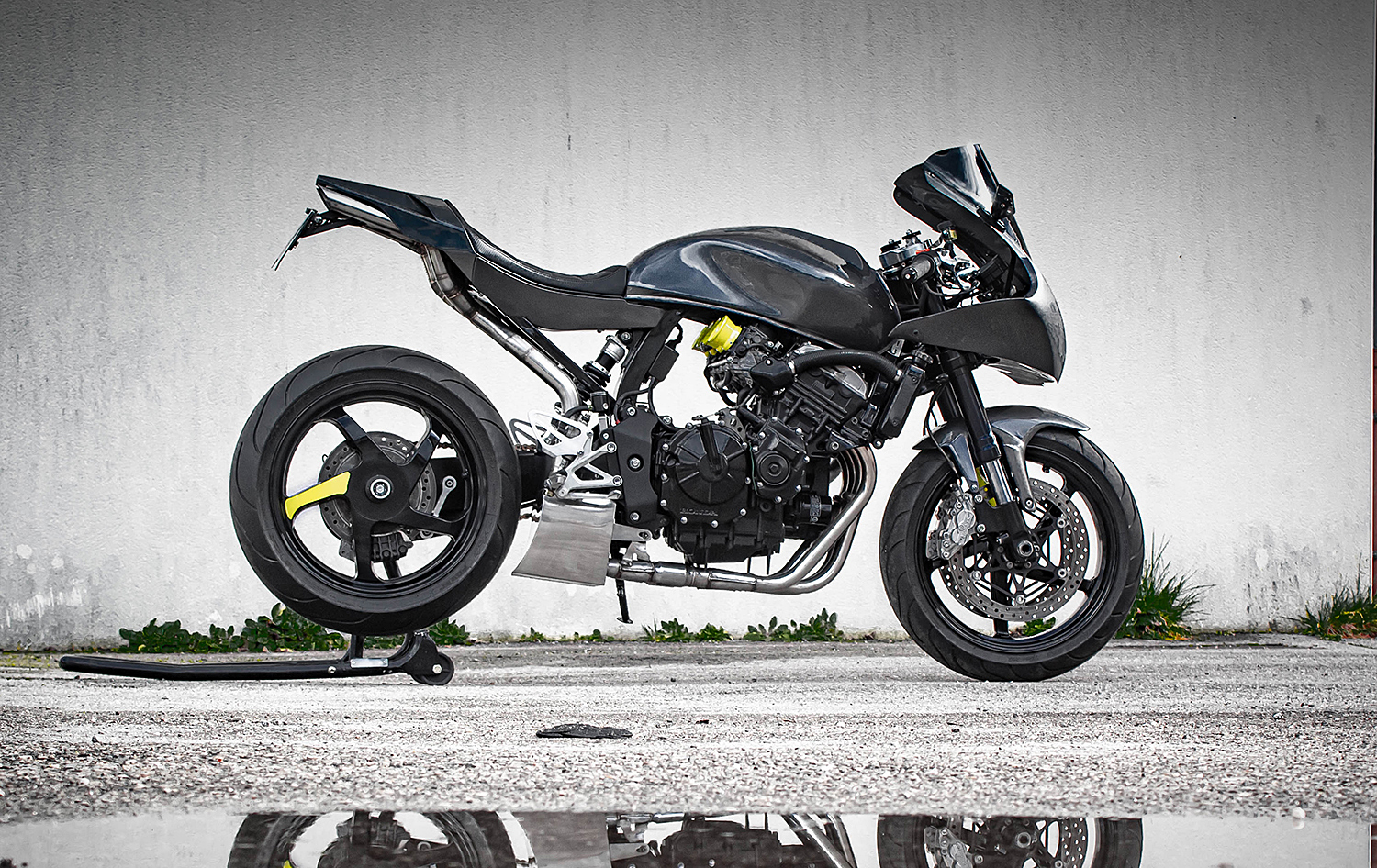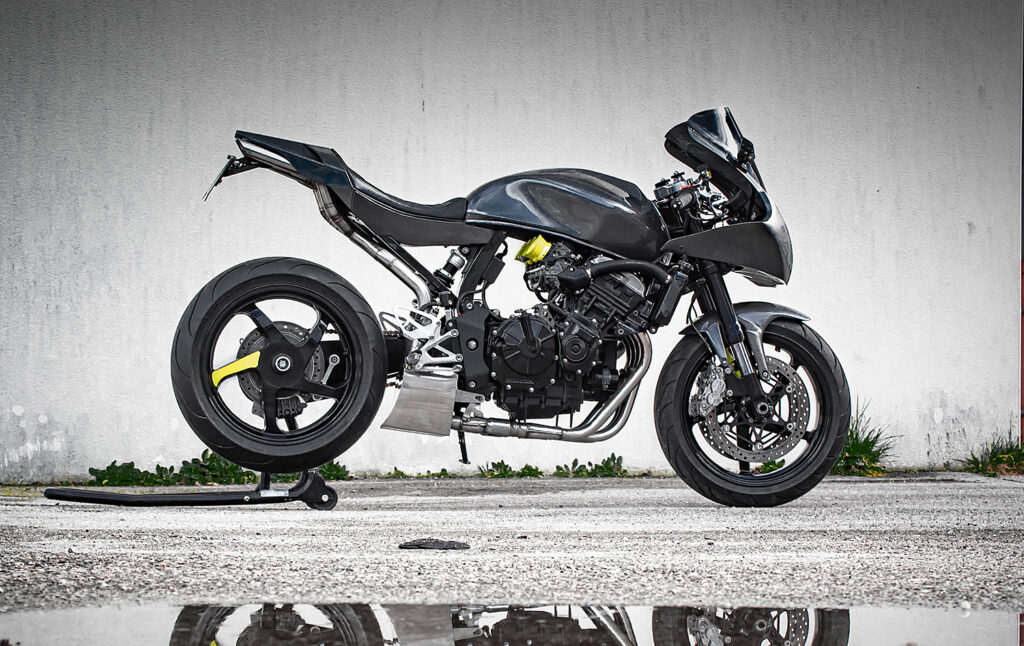
There was a period in the late ’80s and through the ’90s that Honda could lay claim to producing the best engines for road or track, four or two-wheels of any manufacturer on the planet. Senna, Doohan, Kocinski, Merkel and more won world titles using the Japanese product in motorsport, and despite the jokes, the VTEC-equipped road cars delivered excellent performance, with good fuel economy, and at a bargain price. In the bike world, machines like the cheerful Honda Hornet looked bland and had cheap suspension, but that engine would rev to the moon and really made for miles of smiles. So, to make this 2001 Honda Hornet into the pocket rocket it always could have been, France’s Eddy Cuccaro from L’Etabli d’Eddy has placed that engine front and centre, and then given the rest of the machine a scintillating transformation.
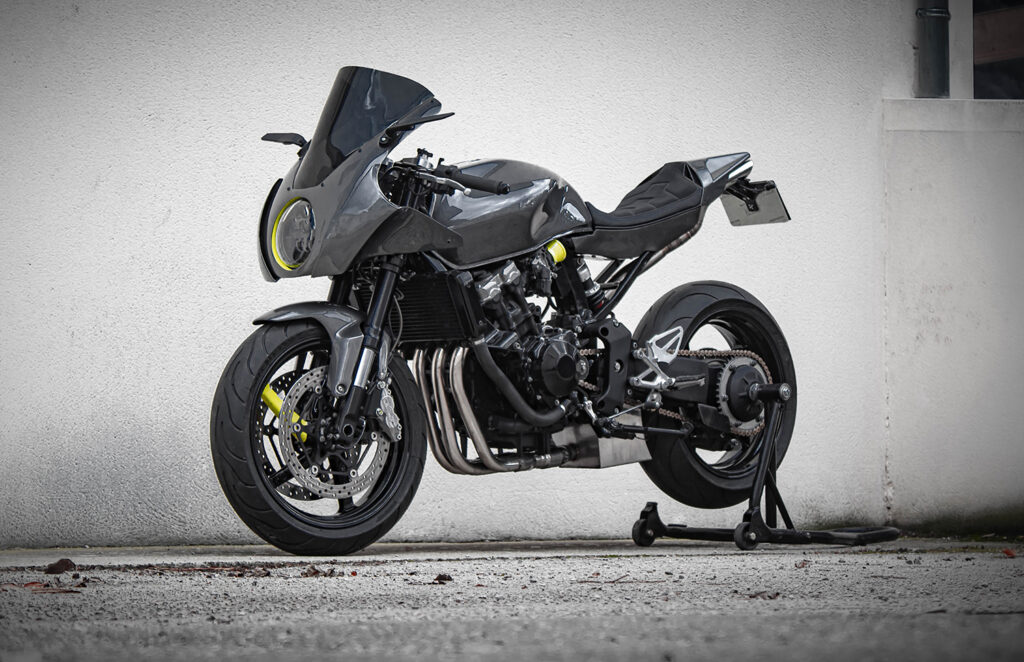
It was in this period that Honda had a truly incredible team of engineers, the likes of which we may never see again, such was their prodigious output. Not only were they building brilliant bikes and cars for the consumer market, but they were dominating the two and four-wheel Grand Prix categories. The likes of Ikuo Kajitani took volumetric efficiency to new levels with his VTEC design and the hard riding and even harder smoking Tadao Baba created the first true Superbike in the Fireblade. Key to so much of this success was cylinder head advancements and although the Hornet was a budget bike, the model across all of its capacity ranges, benefited from these high flowing twin-cam, 16-valve, heads.
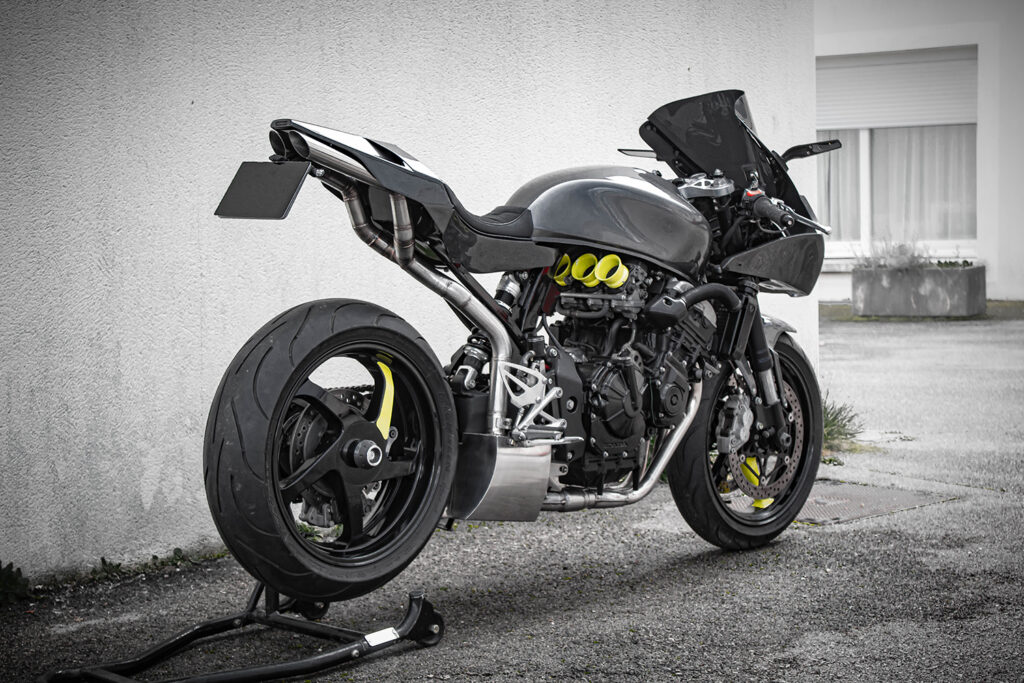
Eddy had previously owned this very Hornet and made many memories on her, but sold it to customise a Suzuki DR600 with brilliant results. Then he bought a newer bike, only one day to see his old Honda for sale, and knew it was her time. “I started the work at the end of 2021 and only finished it today. I worked on it during my breaks at work and my free time. It’s not my job and I have to find time with my family life.” But having knocked the DR out of the park and done excellent work on an Aprilia, he knew how to plan things out. And it all starts with getting the bike back to the frame, which is shared equipment with the JDM only CB250F, but it wouldn’t stay stock for long.
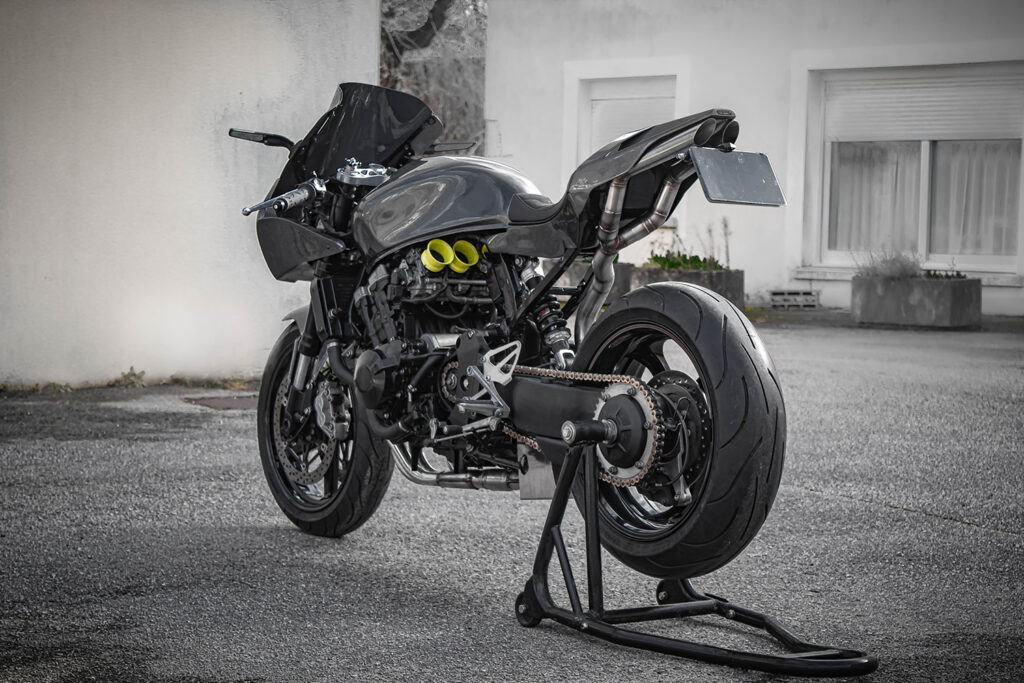
Eddy has neatly trimmed up the subframe to suit his customisations that would follow and then it was down to the swingarm pivot for some major modifications. These were required to allow for the fitment of a single-sided swingarm, taken from a Honda VFR800. But it’s no simple bolt-in job, with differences in width, chain alignment and shock mounting points among just some of the challenges to overcome. Being a metal worker meant Eddy was well equipped to take on the job, with lots of neat tweaks and spacers getting things just right. A quality adjustable shock for the conversion has been used and an axle nut cover keeps things uber clean.
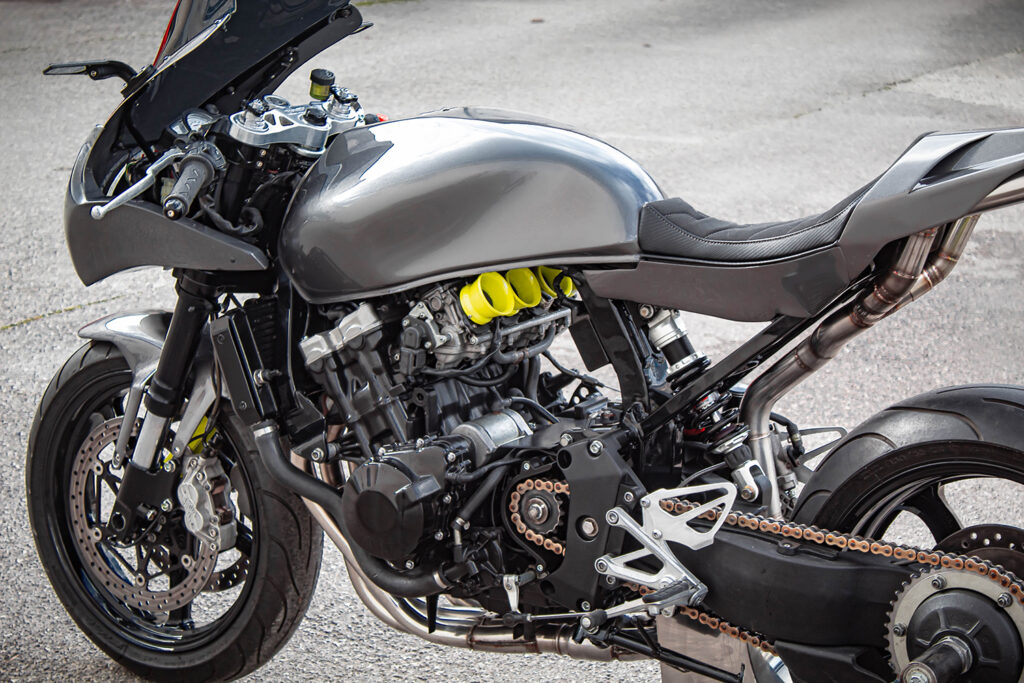
Having made such a big change to the rear, the tiny conventional forks fitted to the Hornet from the factory had to go, and a beautiful handling bike donates the parts. The entire front is taken from an Aprilia RSV1000 and the seriously good suspension drops through a custom upper triple clamp which has had some engraving to bling it out. The conversion also ensured that the front wheel was a similar match to the VFR piece for a consistent look, and the Brembo brakes give the Hornet huge hop up over the factory parts. The fender that covers the front tyre is only the non-metal piece of bodywork and sticking with the stock Aprilia item means you get a factory level of finish.
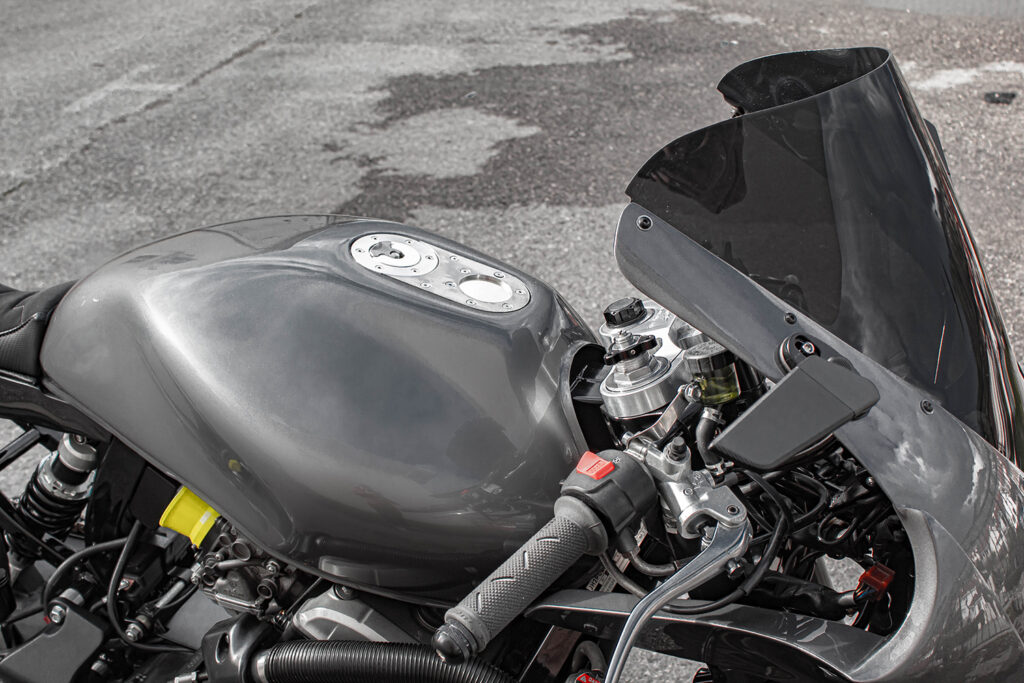
But there is nothing factory about that stunning front cowl above, with Eddy’s years of metal work experience shining through. The half-faired look is not an easy one to pull off, but the level of detail in the cowl, with the twin skins crafting sharp lines, the 3D effect you get as your angle of approach moves to the side and the sinister vibe of the tinted screen all helping to create a brilliant piece.
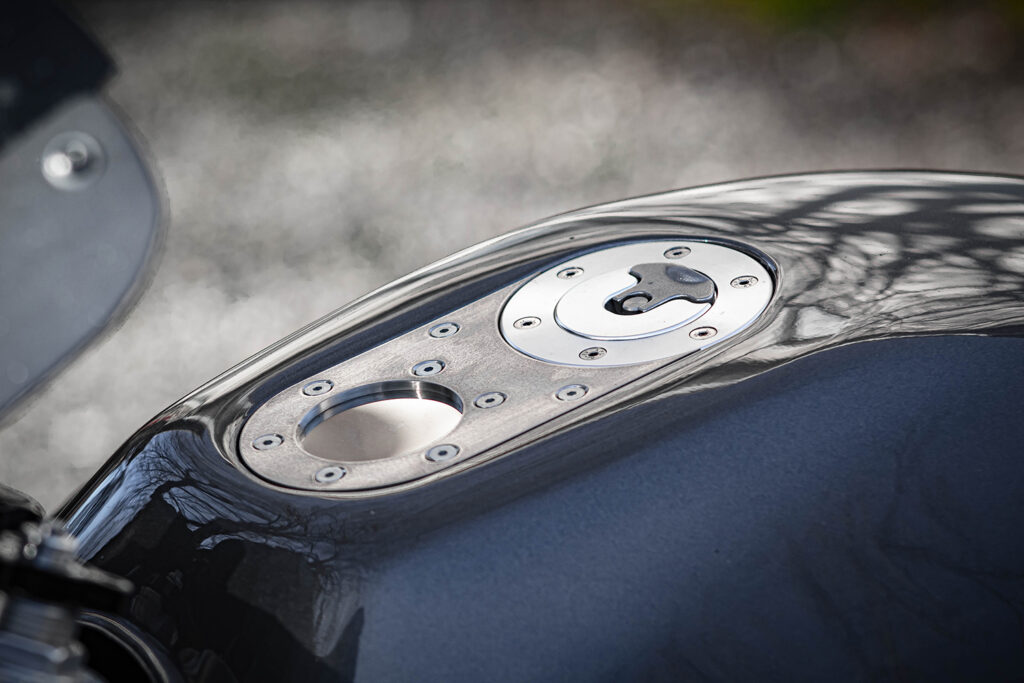
You almost forget then that the tank is stock (apart from the twin filler), its lines enhanced by the drama around it, which is only amplified by that tail. The two-piece unit features a pair of side covers to hide the frame, while the cowl itself vents air on both sides before sharpening to a pointed rear.
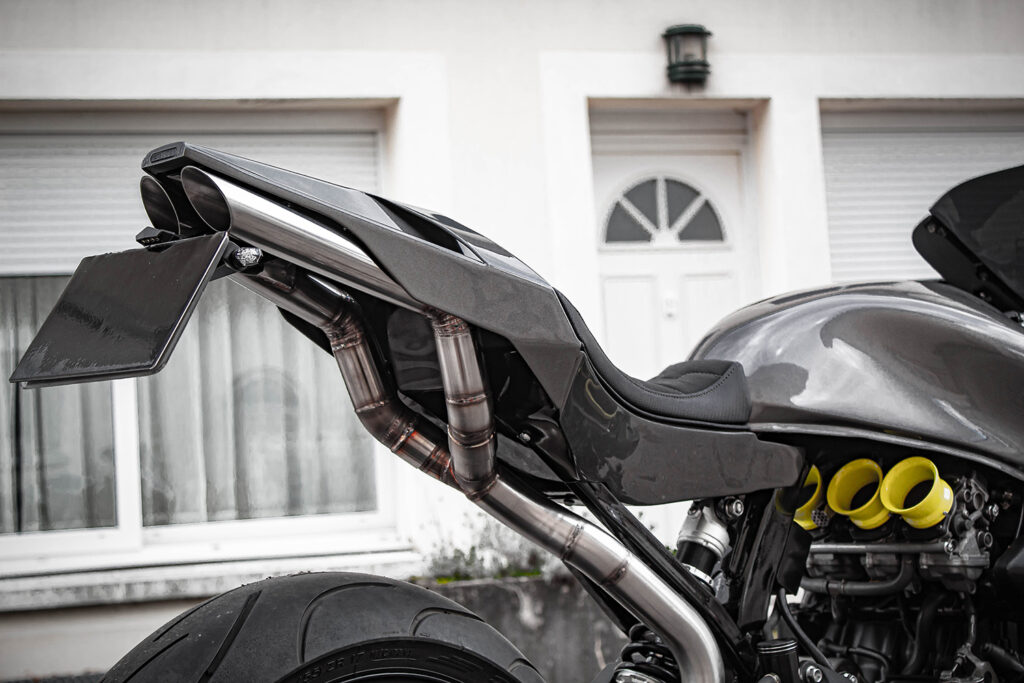
And the drama of that rear end is also part of the engine package, the 100hp, 599cc, high-revving unit that makes the Hornet an attractive prospect in the first place. And it’s the exhaust that is the additional party piece here, built by Eddy to extract more power, deliver a screaming sound and add to the character of the motorcycle. The relatively conventional front system meets a collector box, shaped to the rear tyre line, before becoming extreme as it snakes its way to a pair of slash-cut tips under the tail unit. But crack the throttle and it’s the inlet that delivers the first sound, brilliantly finished off with quad velocity stacks in a neon yellow.
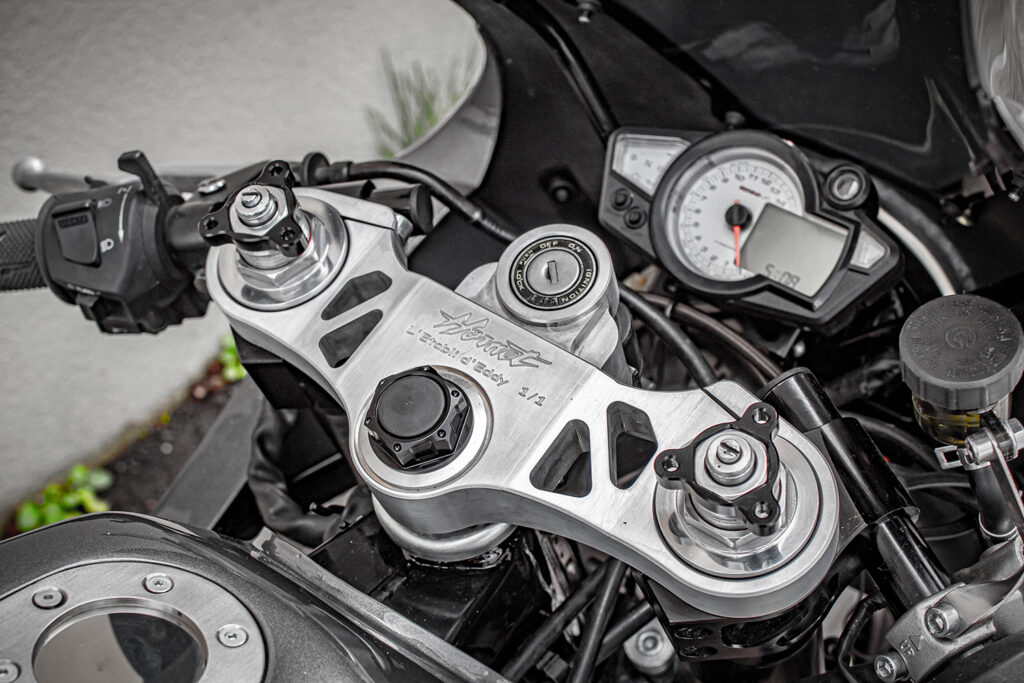
The temptation to go with a wild colour might have been there, but the wise decision prevailed, with Eddy and his painter DP Custom utilising a dark metallic silver for an element of prestige. Black is used across the mechanical setup and for the frame, while the wheels get hit with a touch of that neon yellow to add just a little extra drama.
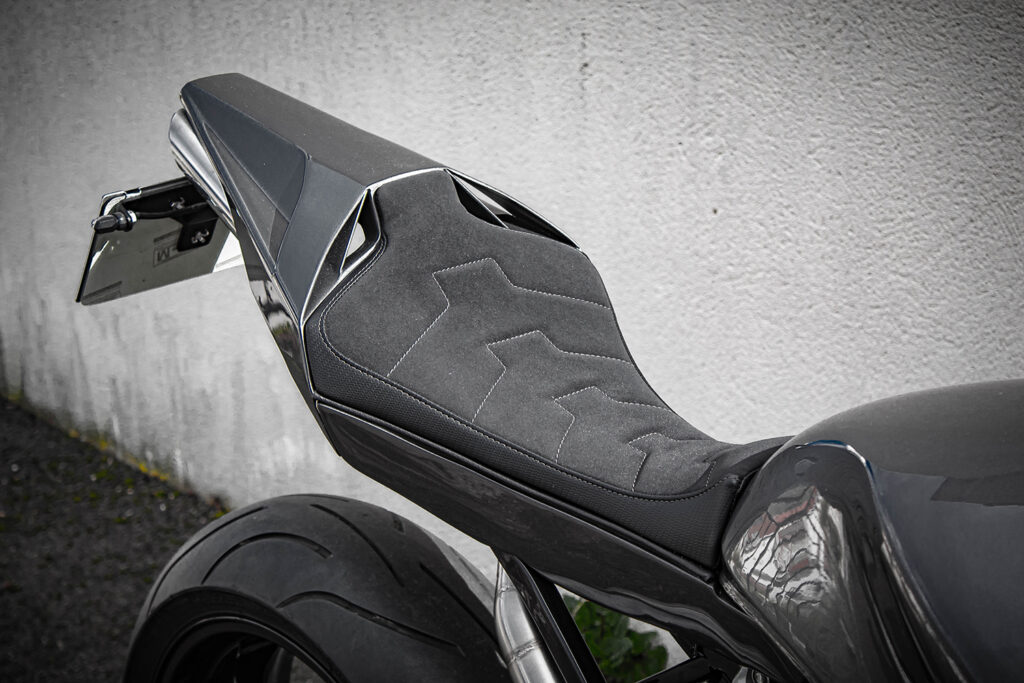
The seat base is Eddy’s handy work and then it was over to Joan Sellerie, who has stitched together one stunning saddle. To keep things clean LED lighting is used throughout, with a futuristic headlight part of the package and the wing-like mirrors another form-fitting part of the function. Having previously crisscrossed Europe, this Hornet’s second time around with Eddy as its owner has seen this UJM commuter become a legitimate sports bike, with the stunning looks to match.
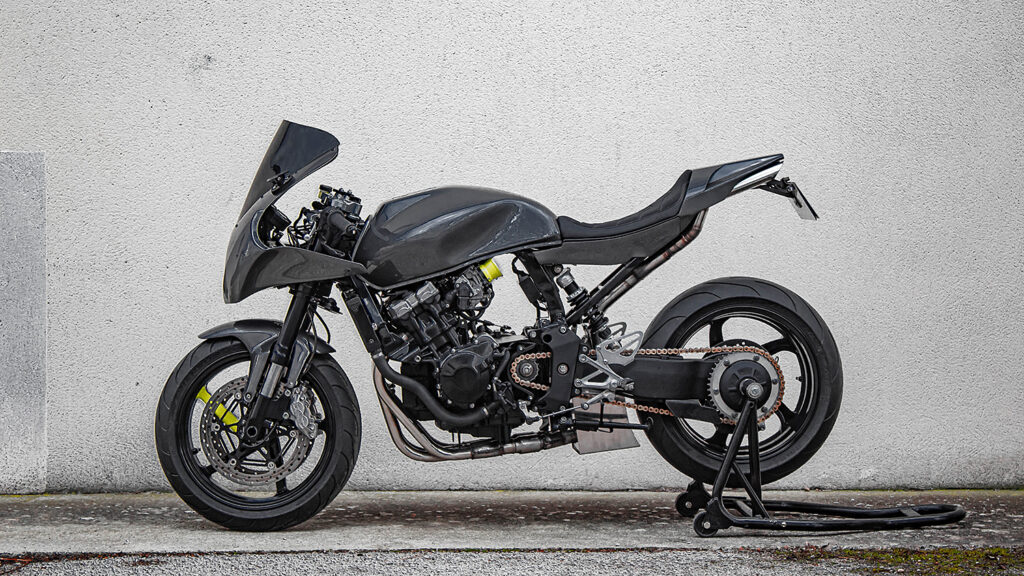
[ L’Etabli d’Eddy ]

